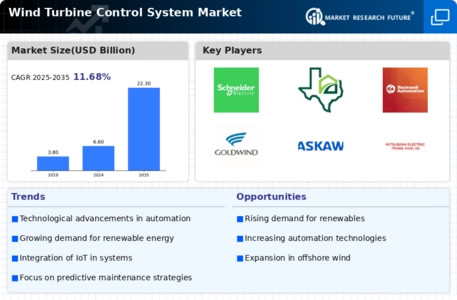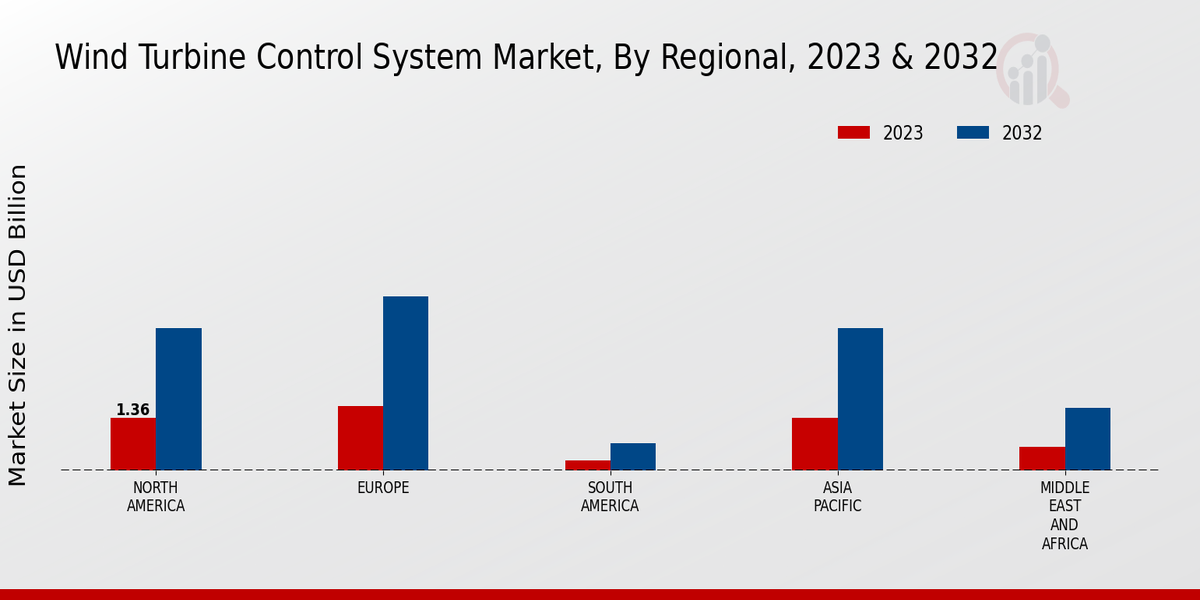Wind Turbine Control System Market Summary
The Global Wind Turbine Control System Market is projected to grow from 6.60 USD Billion in 2024 to 22.26 USD Billion by 2035.
Key Market Trends & Highlights
Wind Turbine Control System Key Trends and Highlights
- The market is expected to witness a compound annual growth rate (CAGR) of 11.68 percent from 2025 to 2035.
- By 2035, the market valuation is anticipated to reach 22.3 USD Billion, indicating robust growth potential.
- in 2024, the market is valued at 6.60 USD Billion, reflecting the increasing investment in renewable energy technologies.
- Growing adoption of wind turbine control systems due to the need for enhanced energy efficiency is a major market driver.
Market Size & Forecast
| 2024 Market Size | 6.60 (USD Billion) |
| 2035 Market Size | 22.26 (USD Billion) |
| CAGR (2025-2035) | 11.68% |
Major Players
GE Renewable Energy, Siemens Gamesa Renewable Energy, Vestas Wind Systems, ABB, Gamesa, Schneider Electric, Wood Group, Rockwell Automation, Goldwind, Yaskawa, Mitsubishi Electric, General Electric, Danfoss, Nordex, Mersen, Siemens Energy, Envision























